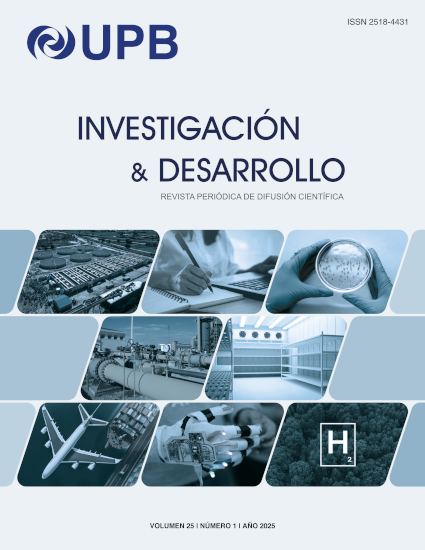LENGUAJE FORMAL DE DESCRIPCIÓN PARA LA LENGUA DE SEÑAS BOLIVIANA (LSB): UNA HERRAMIENTA ABIERTA PARA SU USO EN OTRAS LENGUAS DE SEÑAS
DOI:
https://doi.org/10.23881/idupbo.025.1-8iKeywords:
Deafness, sign language, animation, language, compiler, PythonAbstract
Within the context of communication for deaf individuals, the development of a formalized language and a compiler is presented, serving to facilitate the creation of animations for Bolivian Sign Language (LSB – from Spanish: Lengua de Señas Boliviana) signs, and is adaptable for use in other sign languages. The system uses domain-specific language (DSL) that defines each sign as a sequence of poses based on vectors and finite variables, integrating central repetition and speed functions to facilitate writing. The results highlight the potential of its use to improve the accessibility and scalability of tools focused on the Deaf community, so as not to be limited by the language of their region, establishing a basis for future advances in assistive technologies for Deaf users.Downloads
References
[1] G. R. R. B. de Bolivia, Guía para la atención a personas con sordera, hipoacusia y sordoceguera en el sistema educativo plurinacional de Bolivia, La Paz, Bolivia: Ministerio de Educación, 2023. Disponible en: https://www.minedu.gob.bo/files/publicaciones/veaye/dgee/GUIA-PERSONAS-SORDAS-cT.pdf
[2] M. Oropeza Condori, “Prototipo de Intérprete Virtual de Texto a Lengua de Señas Boliviana como Herramienta de Comprensión Lectora”, Proyecto de Grado, Universidad Privada Boliviana, Cochabamba, Bolivia, 2025.
[3] V. Setiawan et al., “An Interactive Sign Language Based Mobile Application for Deaf People”, en 2023 7th International Conference on Trends in Electronics and Informatics (ICOEI), IEEE, 2023, pp. 1635–1641, doi: 10.1109/ICOEI56765.2023.10125821.
[4] G. G. Nath y V. S. Anu, “Embedded sign language interpreter system for deaf and dumb people”, en 2017 International Conference on Innovations in Information, Embedded and Communication Systems (ICIIECS), IEEE, 2017, pp. 1–5, doi: 10.1109/ICIIECS.2017.8275907.
[5] N. Tiangtae, S. Ramingwong, L. Ramingwong, D. Potikanond, N. Homkong, y N. Maneerat, “Developing software for the deaf community: Conquering an extreme case scenario”, en 2017 21st International Computer Science and Engineering Conference (ICSEC), IEEE, 2017, pp. 1–5, doi: 10.1109/ICSEC.2017.8443794.
[6] Ministerio de Educación de Bolivia, Federación Boliviana de Sordos, Fundación Amazónica para el Desarrollo de los Sordos, y Proyecto “arca” de Riberalta, “Curso de enseñanza de la Lengua de Señas Boliviana LSB”. Ministerio de Educación, Diciembre de 2012. Consultado: el 12 de junio de 2025. [En línea]. Disponible en: https://www.minedu.gob.bo/files/publicaciones/veaye/dgee/CURSO-DE-ENSENANZA-DE-LA-LENGUA-DE-SENAS-BOLIVIANA-Modulo-1.pdf
[7] M. Oropeza Condori, “IVILSB”, repositorio de Github, Github. Consultado: el 25 de julio de 2025 [En línea]. Disponible en: https://github.com/MayOnesita/IVILSB.git
Downloads
Additional Files
Published
Issue
Section
License
Copyright (c) 2025 Mayra Oropeza-Condori, Miguel Frade-Flores, Marcel Barrero Mendizábal, Cecilia Tapia-Siles

This work is licensed under a Creative Commons Attribution-NonCommercial-ShareAlike 4.0 International License.
Creative Commons Attribution-Noncommercial-Share Alike
CC BY-NC-SA
This license lets others remix, tweak, and build upon your work for non-commercial purposes, as long as they credit the author(s) and license their new creations under the identical terms.
The authors can enter additional separate contract agreements for non-exclusive distribution of the version of the article published in the magazine (for instance, they may publish it in an institutional repository or a book), subject to an acknowledgement of its initial publication in this magazine.
